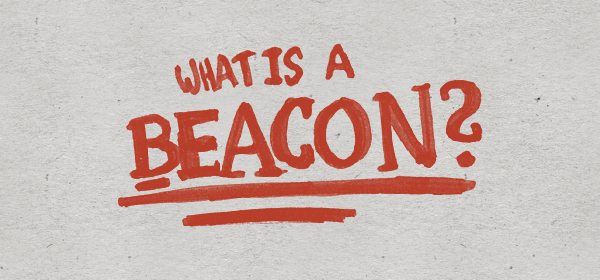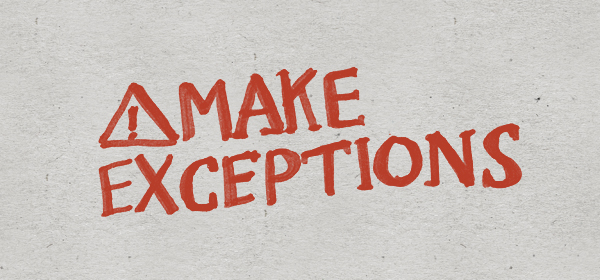Make Better Design Decisions By Using Beacon Concepts
On of my main goals with my writing is to show you different approaches to building thinking tools, that can help you in your design process. Today I want to explain a thinking-tool for designing more complex systems. The goal of this tool is to make sure all small design decisions serve the right purpose and create a round big picture.

Understanding beacon concepts.
Every design decision needs to serve a purpose. This is nothing new. But when you are defining the margins of a page of a book or the colour of a button, this mantra becomes abstract and distant. When you have to manage a lot of small decisions, it can be complicated to tie those back to the project goals.
Often then, we default to doing things the way they are done. This can become a problem, when you have to explain those decisions or when they break another element you define later on. To tackle this problem, you need ideas to guide small design decisions based on the goals and purpose. They enable you to link all small design decisions to the purpose. They act as a lighthouse in a sea of small problems that help to keep you on the right path. That’s why I call them beacon concepts.
“They act as a lighthouse in a sea of small problems that help to keep you on the right path. That’s why I call them beacon concepts.”
Define beacon concepts that guide your decisions.
The way you develop beacon concepts can vary based on your general process, but also from project to project. I worked on a website with a friend of mine where we started from two beacons and then went top to bottom though every little element.
To give you an idea how beacon concepts can be defined, here are the two main concepts, Fabian and I defined in the mentioned project. It was the relaunch of the german initiative Designkritik. It’s mission is serving as a platform to create interest in design criticism and theory with a focus on younger readers and authors.
-
A website that has the goal to support design theory and create space for discourse, has to have an enjoyable reading experience and has to be functional.
-
Since the website is a platform for discourse and thoughts of the publishing authors, there has to be a clear separation of published content and the surrounding structural elements of the site.
Those two big-picture concepts helped us to tackle every design decision in the process. For every new element we could check those two questions and start designing based on those concepts.
In another project I worked on though, the beacon concept emerged from iterating on a lot of ideas and decisions. The beacon idea formed itself – I discovered it. When I identified it, I started fine-tuning it. Then I went back to all small decisions and checked if they were in line with the beacon idea.

Prepare yourself to make exceptions.
When you have your main concepts at hand it is a lot easier to approach small problems. You can tie them back to the overarching thinking, without having to start from the beginning every time. But be careful not to follow that logic too bluntly. You always have to take the individual characteristics of the single element into account.
There will be cases, where you have to diverge from the concepts, because the element demands it. For example, if one rule is that a brand’s logo always is at the right bottom of a medium, you will change that for the website. You have to respect the usage-patterns of different elements and let that influence your use of the beacon concept.
As with every part of your process, you should be ready to adapt and iterate on the beacon concepts and on how you apply them. That way they can help you to make sure, that your design decisions are all tied back to the goals. They help you to achieve a high level of consistency and strengthen the core ideas.
Beacon concepts also make it easier to explain and sell your decisions to your clients. If you start from relatable concepts that are based on the goals you defined, you can use them to explain your smaller decisions. Beacon concepts are a possibility to bridge the gap between strategy and design decisions in a relatable and practical way.
To conclude, I have a question for you:
Are you using similar tools in your process? Are they something that is only in the back of your head, or do you communicate them with your clients or team?
To answer, hit reply, or jump over to Twitter.